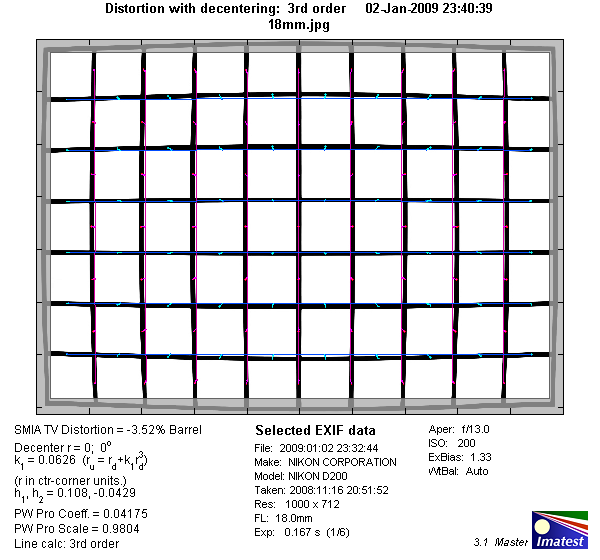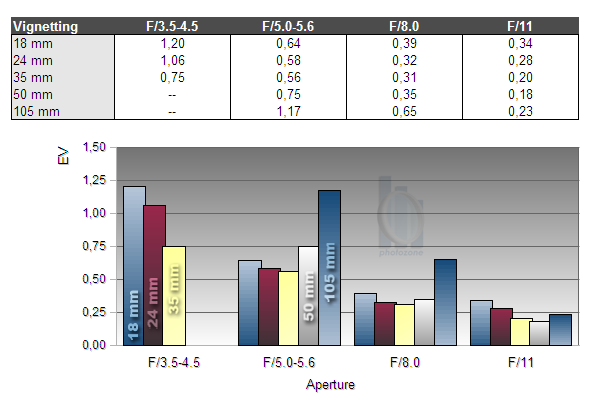|
Nikkor AF-S DX 18-105mm f/3.5-5.6G IF-ED VR - Review / Test Report - Analysis |
|
Lens Reviews -
Nikon / Nikkor (APS-C)
|
|
Page 2 of 3

Distortion
Typical for zoom lenses of this class the AF-S 18-105 VR shows quite pronounced barrel distortion at its shortest focal length. At 24 mm the distortion already flips over to the pincushion type, allthough at a rather moderate level. At 35 mm the amount of pincushion distortion has increased significantly and stays on a rather high level for the rest of focal range.
|
Move the mouse cursor over the focal length text marks below to observe the respective distortion
|
| 18mm |
24mm |
35mm |
50mm |
105mm |
|

|
The chart above has a real-world size of about 120x80cm.
Vignetting
Lenses with reduced image circles designed for DX cameras usually show pronounced vignetting at max. aperture. The AF-S 18-105 VR is no exception to this rule with the highest amount of vignetting visible at the extreme ends of the zoom range. Wide open at 18mm, 24mm and 105mm vignetting can be disturbing (depending on the subject). Stopping down one stop reduces the issue to a level that's hardly field-relevant.

MTF (resolution)
The lens delivers excellent resolution in the image center for most of its focal range. Only at the long end the sharpness drops to still very good figures throughout the tested aperture range.
The borders and corners lag a bit behind, but generally offer good to very good resolution. However, they never reach excellent sharpness on our scale. As in the image center, the sharpness drops towards the longest focal length.
Please note that the MTF results are not directly comparable across the different systems!
Below is a simplified summary of the formal findings. The chart shows line widths per picture height (LW/PH) which can be taken as a measure for sharpness.
If you want to know more about the MTF50 figures you may check out the corresponding Imatest Explanations

Chromatic Aberrations (CAs)
The level of lateral CAs (color shadows at harsh contrast transitions) is rather high, reaching peak values of almost 1.9px and generally well above 1 px at most focal lengths and aperture settings.
However, CAs can easily be corrected in software or by the camera itself (most modern Nikon DSLRs remove CAs themselves if you shoot JPGs).

|